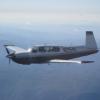Airspeeds for calibrating GAP26 AOA indicator on a Bravo
-
Members Online
- joepilotmooney
- Aerodon
- OSUAV8TER
- gabez
- Alan Maurer
- UteM20F
- ToddCC22
- Neshi
- Mark942
- alextstone
- MooneyJohn
- DC2
- da3b242
- Hradec
- N201MKTurbo
- goodyFAB
- YeloSub
- Graf_Aviator
- Greg Ellis
- Fly Boomer
- Mike A
- JCCV
- DonMuncy
- jimbgi
- Echo
- Matt_AZ
- Bolter
- Deb
- bluehighwayflyer
- kaba
- TheAv8r
- TCC
- PeteMc
- hubcap
- Dirty Bird
- Larry
- EricJ
- JoeM
- Meshach
- toto
- Bob Weber
- richardbrochu27
- Marc_B
- Tmooney


Recommended Posts
Join the conversation
You can post now and register later. If you have an account, sign in now to post with your account.